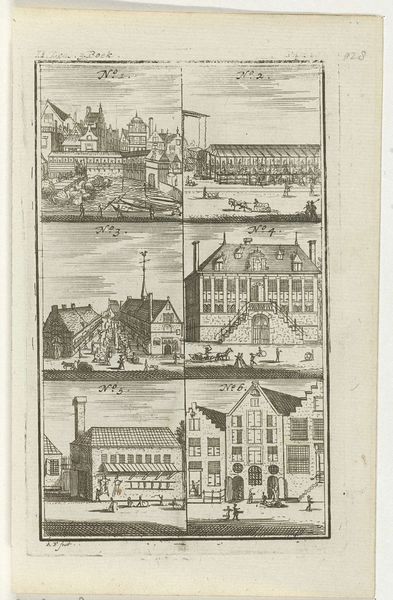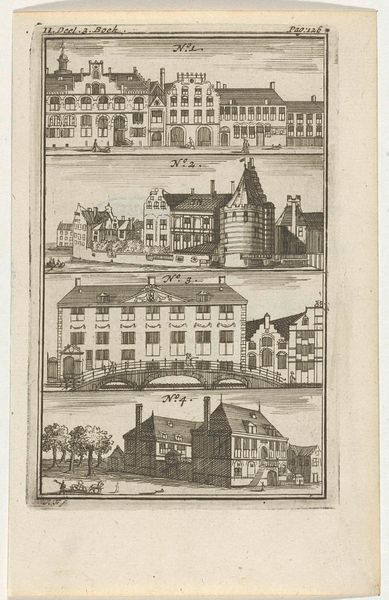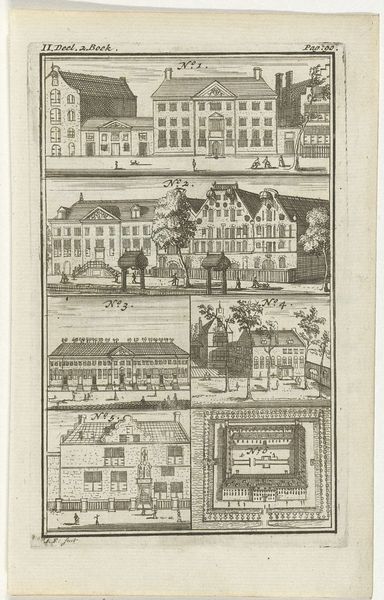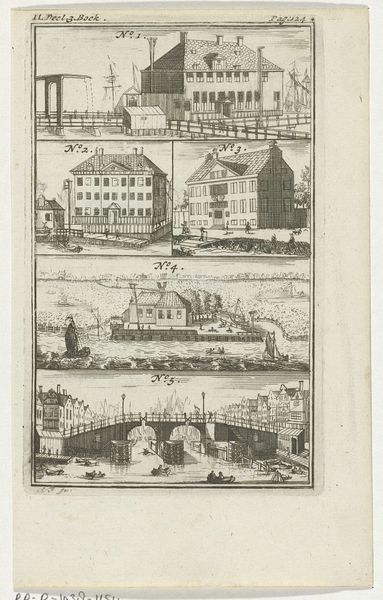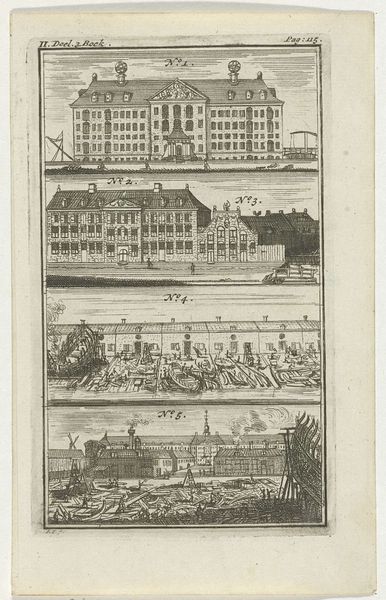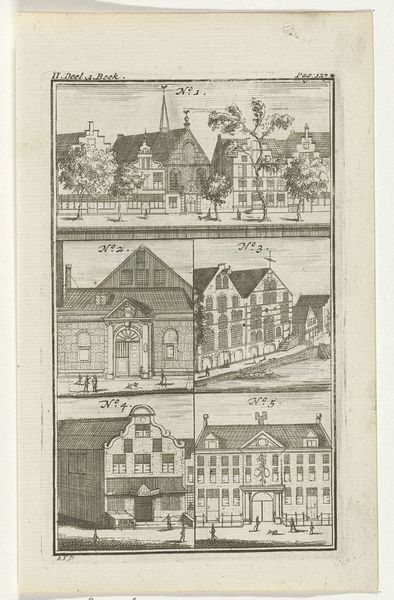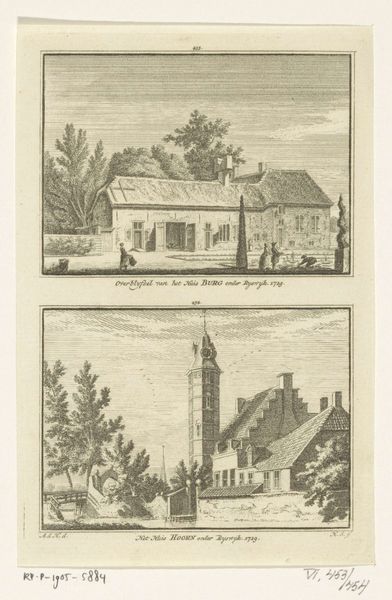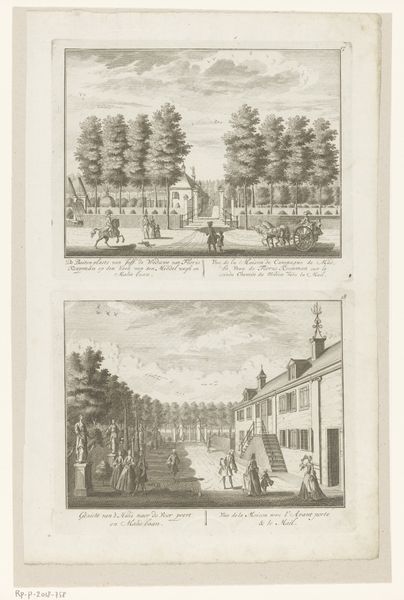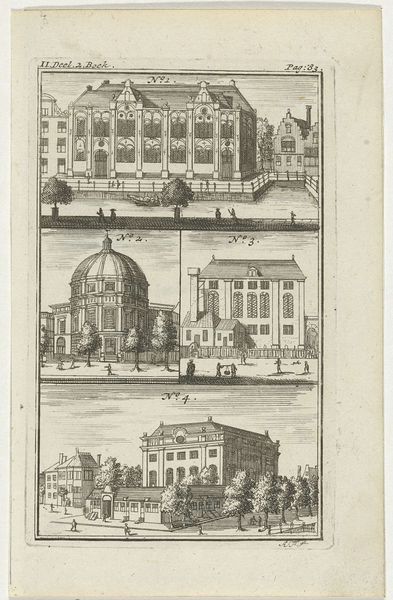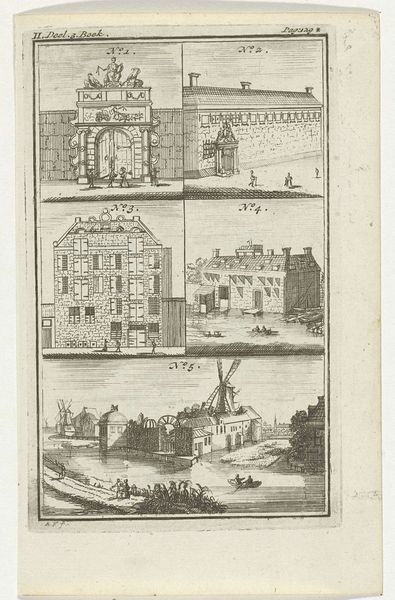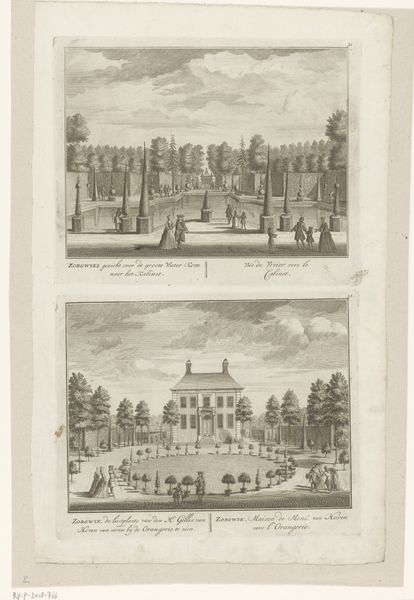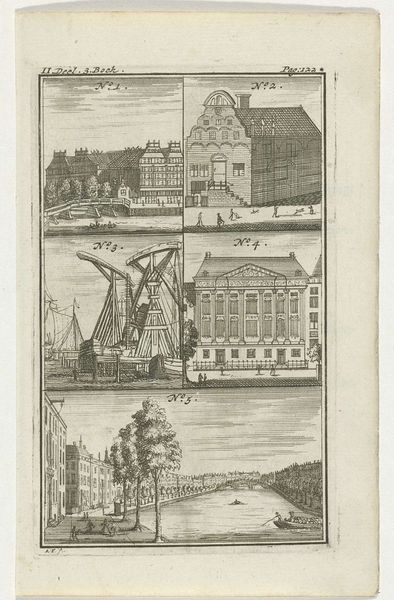
print, etching, architecture
#
baroque
# print
#
etching
#
etching
#
cityscape
#
architecture
Dimensions: height 154 mm, width 96 mm
Copyright: Rijks Museum: Open Domain
This printed page, by Roeland van Leuve, is an illustration for a book, made using etching, a printmaking process that involves biting lines into a metal plate with acid. The matrix is made of zinc or copper. The etcher protects parts of the plate with wax. The image shows buildings, ordered in a grid. The crisp, precise lines were achieved by coating a metal plate with wax, scratching the design through it, and then submerging the plate in acid. The acid eats away at the exposed metal, creating recessed lines that hold the ink. The plate is then inked, wiped clean, and pressed onto paper, transferring the image. Etching allowed for relatively easy duplication, making images widely accessible during this period. This print is more than just a picture. It’s a testament to the skilled labor involved in its creation and a reflection of the growing culture of accessible imagery. It reminds us that even seemingly simple images carry a rich history of materials, making, and social context, challenging our notions of art.
Comments
No comments
Be the first to comment and join the conversation on the ultimate creative platform.
